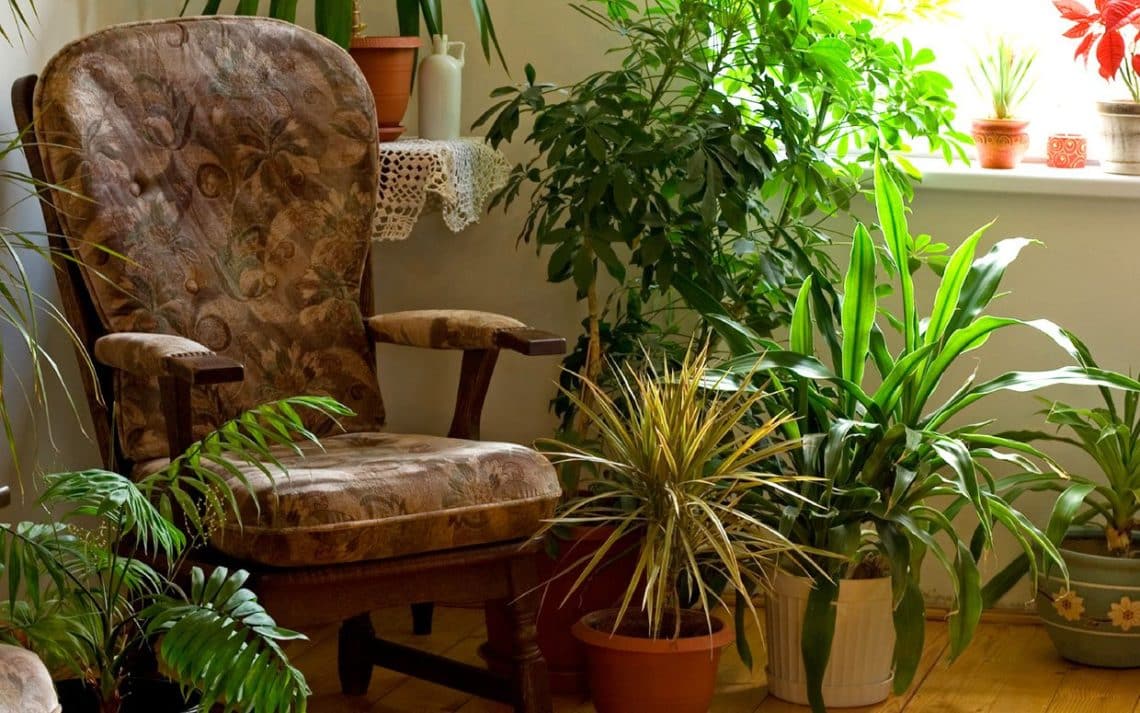[vc_row][vc_column][vc_column_text]
Now that nighttime temperatures are dipping, it’s time to move houseplants that vacationed outdoors during the warm months indoors. When the temperature remains at 45 degrees Fahrenheit or below at night, your tender tropicals and subtropicals are safest inside.
Besides saving your houseplants from imminent death outdoors, bringing them indoors is a treat for you during the long winter days ahead, says Mandy Stanley, a ceramic artist and Pilates instructor who lives in Acworth, Georgia.
“Having all of the extra greenery indoors when the weather outside is cold and unpleasant makes me feel good, and I bring in herbs that I use for cooking all winter, such as thyme, oregano, chives, and tarragon,” she says.
Successfully moving houseplants indoors so they thrive during the winter months takes keeping the following tips in mind.
1. Wash your plants with a strong spray of water outdoors, and then apply insecticidal soap and let it dry. “This procedure is important, because it removes and destroys insect pests and their eggs,” says Stanley. “Any pests on your plants will multiply rapidly indoors and quickly cause an infestation of your indoor garden.”
2. Move plants indoors to a bright area. Stanley has an ideal location in her great room, which features a southern exposure and has floor-to-ceiling windows. Her prior home, however, didn’t have a bright area, so she put the plants in the basement directly under growlights.
3. Provide humidity. Stanley has a whole house humidifier in her current home that keeps her houseplants happy when forced heat blows. If you don’t have such a setup, mist the plants a couple of times a day, when possible, and put them on humidity trays. These are trays filled with pebbles to which you add water to just below the top of the pebbles. The water evaporates and humidifies the plants.
Signs that a plant could use more humidity are dry leaf tips and leaf drop—although some leaf loss is normal after a plant is moved indoors.
4. Water sparingly. “Avoid overwatering your plants in the winter months. Keep in mind that most plants will drink very little at this time of year. Water them when the top one to two inches of soil has dried out, and when you do, give them a moderate amount of water.
5. Delay feeding. Don’t fertilize the plants until a month before you plan to put them back out in spring. For Stanley, this is mid-March, as her last frost date is generally mid-April. She feeds weekly with a half-strength solution of a liquid, all-purpose, organic fertilizer.
6. Transition out. Your houseplants will be ready to go outside again in the spring when you venture outdoors to enjoy the mild weather. Wait until the danger of frost has passed and nighttime temperatures stay above 45 degrees Fahrenheit. When you move your plants outdoors, water them well. In about a month, they’ll be happily growing once again.
[/vc_column_text][/vc_column][/vc_row]

